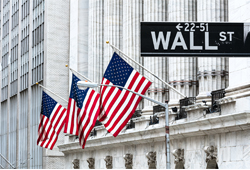California Law Requiring Female Directors on Public Company Boards Held Unconstitutional
 A California court has held that California Senate Bill 826, which required that “publicly held” corporations that listed a California address for their principal executive offices on the cover page of their Form 10-K reports must have specified numbers of female directors by certain dates, violates the California constitution and has enjoined the use of California taxpayer funds to carry out the 2018 law. This ruling follows the decision of another California court in April 2022 holding that California Assembly Bill 979 violated the California constitution and the issuance of a similar injunction preventing California from using taxpayer funds to implement that law. Assembly Bill 979 was enacted in 2020 to add a requirement that publicly held corporations that were already subject to Senate Bill 826 also have specified numbers of directors from “underrepresented minorities,” as defined in the law, by certain dates. If the state does not appeal these decisions and California appellate courts do not overturn these decisions, it appears that both of these legislative initiatives to promote more diverse representation on public company boards will have come to an end.
A California court has held that California Senate Bill 826, which required that “publicly held” corporations that listed a California address for their principal executive offices on the cover page of their Form 10-K reports must have specified numbers of female directors by certain dates, violates the California constitution and has enjoined the use of California taxpayer funds to carry out the 2018 law. This ruling follows the decision of another California court in April 2022 holding that California Assembly Bill 979 violated the California constitution and the issuance of a similar injunction preventing California from using taxpayer funds to implement that law. Assembly Bill 979 was enacted in 2020 to add a requirement that publicly held corporations that were already subject to Senate Bill 826 also have specified numbers of directors from “underrepresented minorities,” as defined in the law, by certain dates. If the state does not appeal these decisions and California appellate courts do not overturn these decisions, it appears that both of these legislative initiatives to promote more diverse representation on public company boards will have come to an end.
Read the client alert.

 Rule 10b5-1 trading plans have faced increased scrutiny since the onset of the COVID-19 pandemic and the corresponding public focus on stock sales by executives of public
Rule 10b5-1 trading plans have faced increased scrutiny since the onset of the COVID-19 pandemic and the corresponding public focus on stock sales by executives of public 


 For life sciences companies who are or are looking to become publicly traded in the U.S., one of the most frequent comments that we see from the SEC as part of their review process is the following:
For life sciences companies who are or are looking to become publicly traded in the U.S., one of the most frequent comments that we see from the SEC as part of their review process is the following: The UK Government has announced a new fund that provides financing to UK start-ups and scale-ups in the form of a convertible loan which is invested directly by the Government. For further detail on the fund please see: https://www.gov.uk/guidance/future-fund.
The UK Government has announced a new fund that provides financing to UK start-ups and scale-ups in the form of a convertible loan which is invested directly by the Government. For further detail on the fund please see: https://www.gov.uk/guidance/future-fund. As discussed in Goodwin’s prior Client Alert, on April 10, 2020, the U.S. Department of Health and Human Services (HHS) began disbursing $30 billion to Medicare providers and suppliers under the Public Health and Social Services Emergency Fund (PHSS Emergency Fund). HHS is requiring providers to agree to certain terms and conditions or return the payments. A number of the terms and conditions created some confusion as to whether providers who have not provided services directly related to COVID-19 may keep the payments. HHS has now clarified that providers may keep payments distributed under the PHSS Emergency Fund regardless of whether they have or will provide services directly related to COVID-19.
As discussed in Goodwin’s prior Client Alert, on April 10, 2020, the U.S. Department of Health and Human Services (HHS) began disbursing $30 billion to Medicare providers and suppliers under the Public Health and Social Services Emergency Fund (PHSS Emergency Fund). HHS is requiring providers to agree to certain terms and conditions or return the payments. A number of the terms and conditions created some confusion as to whether providers who have not provided services directly related to COVID-19 may keep the payments. HHS has now clarified that providers may keep payments distributed under the PHSS Emergency Fund regardless of whether they have or will provide services directly related to COVID-19. As the COVID-19 pandemic continues to unfold, U.S. public company compensation committees face unique challenges as they focus on retaining and appropriately incentivizing employees while evaluating the impact of the pandemic on the company. This client alert provides a high-level overview of some key issues that compensation committees should be focusing on in this environment.
As the COVID-19 pandemic continues to unfold, U.S. public company compensation committees face unique challenges as they focus on retaining and appropriately incentivizing employees while evaluating the impact of the pandemic on the company. This client alert provides a high-level overview of some key issues that compensation committees should be focusing on in this environment.